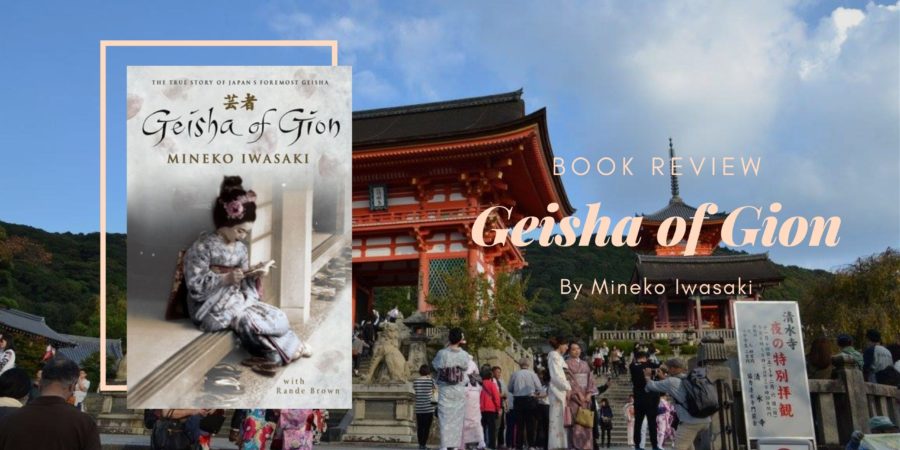I would like to introduce you to the book you should be reading instead of Memoirs of a Geisha. Because not only is Memoirs of a Geisha incorrect, it was also based on Iwasaki Mineko’s life (just that Arthur Golden mis-represented things by portraying certain events negatively instead of positively, etc etc. You can read more about this in Iwasaki’s Wikipedia page.)
So, I first found out about this book while I was in Fukuoka and I was fascinated by the book and the fact that we got to hear from an actual Geisha vs an outsider who did not grow up in the system. But, I didn’t actually buy a copy until a friend asked me if I knew any books about geisha and I decided to buy a copy for myself!
But enough about my history with the book.
Geisha of Gion is the memoir of Iwasaki Mineko, who was one of the top geiko (the Kyoto term for geisha) of her day. She started training for this life when she was five and the proprietress of a geisha house met her and decided to make Mineko her heir (atotori). Life as a maiko and geiko was not easy, as Mineko had to change her name, endure bullying and harassment, but her love of dance kept her going… until she couldn’t.
This book is both a memoir of Iwasaki’s life and an explanation of Geisha culture post-WWII. Quite a few things caught my eye, namely:
- Geisha houses are inhabited and run by women.
- Geisha can be married and work at the same time because geisha’s are not prostitutes. By the post-WWII era, geisha’s were known for their art and whether they decided to sleep with their customers was entirely their perogative.
- This quote: “Being a geiko is not simply a matter of mastering one’s art form. One must also have passion and enthusiasm for the profession, which requires a profound commitment, an enormous amount of work, and unflappable countenance and the presence of mind to stay calm in the midst of disaster.”
- Regarding dance training: There is concept called “otome” where the teacher just stops the student due to a mistake and the student has to leave (indefinite suspension). It is up to her superiors to negotiate her return. But this otome is only given to fantastic dancers to push them one step further.
- No men are allowed in the house except the otokoshi (dresser) who helps the geiko to dress. The otokoshi plays a vital role because they ensure the Geisha wear their clothes correctly and comfortable. Iwasaki mentioned that she was 79lbs (35kg) when she debuted but her kimono and accessories was 44lbs (20kg).
- Dances in Japan are split into two main categories – Mai/舞 (sacred danes) and Odori/踊り (the “dance that celebrates the vicissitudes of human life”)
- Geisha’s work at a type of establishment called “ochaya“. Traditionally, you can only be a customer through a referral. So the geikos can know generations of the same family because the father will bring the sons, etc (also, apparently women are quite often customers/guests. Sometimes it will be a family who books a party to celebrate the birth of a child and the geisha will be there to coo over the baby)
- When entertaining VIPs, the geisha’s will prepare for the meeting by reading about them, their work, etc so they can make intelligent conversation
I think it’s pretty clear that being a geisha requires a lot of work and commitment, and that they are definitely not high-class prostitutes!
Re-reading this reminded me about how much work it takes to be a geisha and increased my admiration for them. If you’re curious about the geisha culture and history in Japan, you should definitely read this book.

Thanks for sharing about this book! It’s terrible how Arthur Golden misrepresented Iwasaki’s experiences in Memoirs of a Geisha. I haven’t read Golden’s work, but now I know what to read instead. Adding this to my TBR!
Right? Reading about how this book came to be was quite eye-opening for me. I hope you enjoy this too!
This sounds absolutely *fantastic*!!! I am 100% adding this to my tbr!
Yay! I hope you enjoy this because I really loved this!